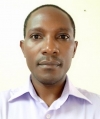Henry Mugerwa
ID: UNCST-2019-R000420
|
A phase III, Multicenter, Randomized, Placebo Controlled, Double-blind Study to Assess Efficacy and Safety of Crizanlizumab (5 mg/kg) versus placebo, with or without Hydroxyurea/Hydroxycarbamide Therapy, in Adolescent and Adult Sickle Cell Disease Patients with Frequent Vaso-Occlusive Crises
REFNo: HS5274ES
Primary Objective: To compare the efficacy of 5 mg/kg of crizanlizumab versus placebo, with or without hydroxyurea/hydroxycarbamide, on the annualized rate of VOCs* that are HCPmanaged (including VOCs leading to
management at a health care facility or those managed via remote consultation) over the planned 52-week treatment period in SCD
patients aged 12 years and older with a history of frequent VOCs (4-12 events in 12 months prior to the screening visit).
Secondary Objective: Key secondary objective:
To compare the efficacy of 5 mg/kg of
crizanlizumab versus placebo, with or without
hydroxyurea/hydroxycarbamide, on the
annualized rate of all VOCs including VOCs that are HCP-managed (including VOCs leading to
management at a health care facility or those managed via remote consultation) and VOCs that are self-managed without recommendations from HCP during the event over the planned 52-week treatment period in SCD patients aged 12 years and older with a history of frequent VOCs (4-12 events in the 12 months prior to the screening visit).
To evaluate the annualized rate of VOCs by type of management between treatment arms over the planned 52-week treatment period:
VOCs that are HCP-managed at a health
care facility
• VOCs that are HCP-managed via remote
consultation
• VOCs that are self-managed without
recommendations from HCP during the
event
• VOCs that are HCP-managed via remote
consultation or self-managed without
recommendations from HCP during the
event
• To evaluate the time to first VOC that is HCPmanaged (including VOCs leading to
management at a health care facility or those managed via remote consultation) between treatment arms over the planned 52-week treatment period.
To evaluate the proportion of participants free from VOCs that are HCP-managed (including VOCs leading to management at a health care facility or those managed via remote consultation) between treatment arms over the planned 52-week treatment period.
To evaluate the duration of VOCs that are HCP-managed (including VOCs leading to management at a health care facility or those managed via remote consultation) between treatment arms over the planned 52-week treatment period.
To evaluate the safety and immunogenicity of crizanlizumab 5 mg/kg over the 2-year study
period.
To explore the efficacy of crizanlizumab 5 mg/kg over the 2-year study period.
To explore the proportion of VOCs that are selfmanaged without recommendations from HCP during the event, versus VOCs that are HCP-managed (including VOCs leading to
management at a health care facility or those managed via remote consultation) between treatment arms over the planned treatment period of 52 weeks.
To explore the proportion of VOCs that are HCP-managed via remote consultation versus VOCs that are HCP-managed at a healthcare facility between treatment arms over the planned 52-week treatment period.
To explore the incidence rates of all VOCs,
VOCs that are HCP-managed at a healthcare
facility, VOCs that are HCP-managed via remote consultation, VOCs that are HCP-managed,VOCs that are self-managed without
recommendations from HCP during the event,
VOCs that are HCP-managed via remote
consultation or self-managed without
recommendations from HCP during the event, by treatment arm.
To explore quality of life in each treatment arm (ASCQ-Me Short Forms: emotional impact, sleep impact, and joint stiffness).
To explore healthcare facility resource utilization (inpatient hospital admission, emergency room visit, urgent care/clinic visit, infusion center visit)between treatment arms over
the planned 52-week treatment period.
To explore the pharmacokinetics (PK) profile of crizanlizumab at 5 mg/kg.
To explore the pharmacodynamics (PD) (Pselectin inhibition) of crizanlizumab at 5 mg/kg.
To explore biomarkers [p-selectin (free and
total)] and CRP].
To explore exposure-response relationship.
|
Wakiso, Lubowa
|
Uganda |
2025-04-02 8:43:56 |
2028-04-02 |
10-15 |
SCD participants aged 12 years and older who experienced at 4-12 VOCs that are HCP-managed (including VOCs leading to management at a health care facility or those managed via remote consultation) in the 12 months prior to screening visit. Participants who have been taking HU/HC for at least 6 months at a stable dose for at least 3 months and plan to continue taking at the same dose and schedule until the participant has reached 52 weeks of study
treatment will be permitted. Participants who have not been receiving HU/HC, and/or
erythropoietin stimulating agent must not have received it for at least 6 months prior to the screening visit. |
Novartis |
Medical and Health Sciences |
Clinical Trial |
Non-degree Award |

|
Ronald Moses Galiwango
ID: UNCST-2024-R015239
|
INTEGRATED FEMALE SEXUALLY TRANSMITTED INFECTION TESTING FOR HIV EPIDEMIC CONTROL THROUGH PREP (IN-STEP)
REFNo: HS5715ES
a) To conduct an individually randomized effectiveness implementation trial of SRST plus cSTI testing to increase PrEP use among African women at high HIV risk.
b) To perform a mixed-methods, implementation science evaluation of female cSTI testing for improving PrEP use for HIV prevention.
c) To determine the most efficient, population-level female cSTI testing strategies to reduce HIV incidence in African settings.
|
Rakai, All parishes in the mentioned subcounty
Kyotera, All parishes in the mentioned subcounty
Lyantonde, All parishes in the mentioned subcounty
|
Uganda |
2025-03-25 11:13:20 |
2028-03-25 |
5000 |
The targeted population is adolescent girls and women aged 15 - 39 years of age |
National Institute of Allergy and Infectious Diseases, R01AI177132 (Financial support); Abbott Laboratories (Material support) |
Medical and Health Sciences |
Clinical Trial |
Non-degree Award |

|
Bruce Kirenga J
ID: UNCST-2019-R001460
|
SURVEY, SAFETY AND EFFICACY OF HERBAL PRODUCTS USED FOR MALARIA PROPHYLAXIS AND TREATMENT IN UGANDA.
REFNo: HS5468ES
To conduct a survey of herbal medicinal products used for malaria prophylaxis and treatment, evaluate their safety and prophylactic efficacy among school-age children (8-15yrs) in Kibuku district, Uganda.
1. To identify herbal medicinal products used by communities for malaria prophylaxis and treatment in Uganda.
2. To evaluate the artemisinin content of herbal medicinal products used by communities for malaria prophylaxis and treatment in Uganda.
3. To determine the antiplasmodial activity (IC50) of herbal medicinal products used for malaria prophylaxis and treatment in Uganda.
4. To evaluate the safety of herbal medicinal products used for malaria prophylaxis among school age children (8-15 years) in Kibuku district in eastern Uganda.
5. To determine malaria incidence among school age children (8-15 years) receiving selected herbal medicinal products for malaria prophylaxis compared to monthly Dihydroartemisinin-Piperaquine (DP) in Kibuku district in eastern Uganda.
6. To determine prevalence of parasitaemia among school age children (8-15 years) receiving selected herbal medicinal products for malaria prophylaxis compared to monthly Dihydroartemisinin-Piperaquine (DP) in Kibuku in eastern Uganda.
|
All Districts, NA
Kibuku,
|
Uganda |
2025-03-14 19:08:33 |
2028-03-14 |
222 participants for the trial (111 per study arm) |
8 to 15 years of age, both male and female, all tribes accessible. |
The Government of Uganda through the Science, Technology, and Innovation Secretariat - Office of the President (STI-OP) |
Medical and Health Sciences |
Clinical Trial |
Non-degree Award |
.jpg)
|
Victor Musiime
ID: UNCST-2021-R013794
|
A global phase 3, randomised, double-blind and placebo-controlled study evaluating the efficacy and safety of etavopivat in adolescents and adults with sickle cell disease
REFNo: HS5637ES
1. To demonstrate superiority of
treatment with etavopivat
versus placebo in adolescents
and adults with SCD.
2. To evaluate clinical efficacy
measures of etavopivat treatment
versus placebo in adolescents
and adults with SCD
3. To assess clinically meaningful
improvement in fatigue and
functional exercise capacity
and QOL measures of
adolescents and adults with
SCD taking etavopivat
treatment compared to placebo
|
Wakiso, Sabagabo
Kampala, Mulago
Jinja, Jinja
|
Uganda |
2025-03-14 17:26:26 |
2028-03-14 |
408 |
12-17, 18 and above, male female all tribes |
Novo Nordisk A/S |
Medical and Health Sciences |
Clinical Trial |
Non-degree Award |

|
Margaret Nagawa
ID: UNCST-2022-R009705
|
EARLY NUTRITIONAL INTERVENTION FOR NUTRITIONALLY AT-RISK INFANTS UNDER 6 MONTHS OF AGE TO REDUCE MALNUTRITION IN THE FIRST YEAR OF LIFE
REFNo: HS3503ES
5. To assess the maternal and health worker perceptions on the integrated intervention package.,4. To assess the effect of an early integrated family intervention program for LBW and undernourished children u6m on growth in the first year of life.,3. To understand the barriers and facilitators to the integration of maternal mental health care and community-based management of malnutrition in infants u6m of age.,2. To assess the prevalence of maternal mental health among caregivers of u6m infants.,1. To determine the factors associated with malnutrition among infants u6m of age and challenges caregivers of LBW and undernourished infants face. ,2. To assess the prevalence of malnutrition among infants u6m and their associations, To assess the effect of an early integrated nutrition intervention for nutritionally at-risk infants u6m of age in reducing malnutrition in the first year of life. ,
|
Adjumani, Adjumani
|
Uganda |
2025-03-14 16:37:34 |
2028-03-14 |
300 mother baby pairs |
Infants under 6 months of age. and caregivers of infants under six months of age.
sex: males and females
Tribe: refugees and host communities |
self funded |
Medical and Health Sciences |
Clinical Trial |
Degree Award |

|
Schola Matovu Nakachwa
ID: UNCST-2022-R011040
|
Development and Testing of BAJJAJJA: An Intervention to Promote Economic Empowerment and Health of Grandmothers who Provide Primary Care for Grandchildren in Uganda
REFNo: SS3611ES
Main Objective
The study’s objective is to refine and test the feasibility and acceptability of my innovative intervention, BAJJAJJA: Building A Joint Action for JaJJAs which couples an income- generating activity (IGA) with nurse-facilitated group health coaching. This objective is informed by the NIH Stage Model of behavioral intervention development.
Specific Objectives
Aim 1: To refine and adapt the BAJJAJJA intervention through a collaborative and iterative feedback process with a diverse community group of 18 members. In a series of sessions, I will iteratively engage diverse community groups (nurses, local officials, IGA experts, and GMCs) and use cognitive interviewing to gain feedback on the appropriateness of study measures, content, delivery, and intervention format.
Aim 2: To test the feasibility, acceptability, and preliminary efficacy of the BAJJAJJA intervention in improving economic and health outcomes among 24 Ugandan GMCs. Over a 12-month period and at three time points of assessment, I will use a mixed methodology with a quasi-experimental design to collect data that will be examined to assess the feasibility, acceptability, and preliminary efficacy of the intervention on participants’ household income and health outcomes.
Aim 3: To explore the barriers and facilitators to (3a) maintenance of the BAJJAJJA individual intervention benefits (e.g., physical activity level and frequency) and (3b) sustainability of the IGA activities (e.g., grandmothers’ accessing external supports such as community resources) at 6 months post-intervention. Following a mixed methods approach, the 24 GMCs from Aim 2 will be interviewed to further evaluate the long-term maintenance and sustainability of the intervention. Health assessments, interviews, and IGA site visits will be used to explore the intervention outcomes and benefits at 6 months post-intervention.
|
Buikwe, Kiteza
|
USA |
2025-03-10 12:23:29 |
2028-03-10 |
24 Grandmother Caregivers |
1. Grandmothers:
Ugandan GMCs who are (a) > 50 years (considering the average reproductive age range in Uganda of 15-49 years), (b) Luganda-speaking (commonly spoken language), (c) primary caregivers for at least one minor grandchild (< 18 years) for > 6 months, and (d) able to perform activities of daily living (e.g., cooking, bathing) without assistance.
2.Community Advisory Board:
10 key informants: Local elected community leaders ( LCs), healthcare professionals, nurses from local health centers and a village health team member, IGA experts, and grandmothers. Participants will be identified by LC leaders or referred by other participants using a snowball sampling technique.
Participants are female (grandmother caregivers) with no tribal restrictions as long as she can speak luganda
|
NIH JOHN E FORGATY International Center |
Social Science and Humanities |
Clinical Trial |
Non-degree Award |

|
Pauline Byakika-Kibwika
ID: UNCST-2019-R001206
|
Randomized trial to evaluate the efficacy and safety of select therapeutic agents in the treatment of Ebola Disease (TOKOMEZA - Ebola Disease Therapeutics)
REFNo: HS5686ES
This is an open-label, adaptive, randomised platform clinical trial to evaluate the impact of 278 potential treatments on mortality in patients with Ebola Disease
|
All Districts, Not specific
|
Uganda |
2025-03-07 18:39:19 |
2028-03-07 |
180 |
All age groups, sex, and tribes that are eligible for recruitment. |
Ministry of Health of Uganda and World Health Organization |
Medical and Health Sciences |
Clinical Trial |
Non-degree Award |

|
Nixon Niyonzima
ID: UNCST-2020-R014577
|
A PHASE III, MULTICENTER, RANDOMIZED, DOUBLE-BLIND, PLACEBO-CONTROLLED STUDY EVALUATING THE EFFICACY AND SAFETY OF INAVOLISIB IN COMBINATION WITH PHESGO→ VERSUS PLACEBO IN COMBINATION WITH PHESGO→ AS MAINTENANCE THERAPY AFTER FIRST LINE INDUCTION THERAPY IN PARTICIPANTS WITH PIK3CA‑MUTATED HER2‑POSITIVE LOCALLY ADVANCED OR METASTATIC BREAST CANCER (INAVO122)
REFNo: HS5649ES
This study will enrol particpants
|
Kampala, Mulago
|
Uganda |
2025-03-07 18:26:49 |
2028-03-07 |
20 |
Adult females above 18 years of age with breast cancer |
F.Hoffman La Roche |
Medical and Health Sciences |
Clinical Trial |
Non-degree Award |

|
Angelina Kakooza-Mwesige
ID: UNCST-2020-R014529
|
EVALUATION OF THE IMPACT OF THE THREE TIER INTERVENTIONS FOR DISABILITY IN EARLY CHILDHOOD (IDEC) PROGRAMME
IN UGANDA
REFNo: HS5596ES
GENERAL OBJECTIVE
The overall aim of this study is to evaluate the impact of the three-tier IDEC model piloted in the two districts of Mubende and Kassanda in Uganda, with a twofold purpose: (1) to improve intervention design and management and (2) to inform decisions about future investment and scale-up by establishing evidence and impact.
SPECIFIC OBJECTIVES.
Primary objectives
1. To determine the coverage of vision screening at 0-3 months and developmental screening at 9 and 18 months in the study sites.
2. To determine the change in functional abilities in children receiving the Tier 2 intervention.
3. To evaluate effects of the individualised (Tier 3) program at regular intervals (at least every 3 months) on child and family functioning, well-being and participation.
Secondary objectives
1. To determine the change in knowledge and skills in parental/caretaker after the Tier 2 interventions.
2. To determine the change in parental/caretaker level of stress after Tier 2 interventions.
3. To determine the change in parental/caretaker level of stress after Tier 3 interventions.
4. To establish the extent to which children with developmental delay and disability Tier 1 are included in ECD programmes
5. To establish the extent to which children with developmental delay and disability tier 2 are included in ECD programmes. (This could be a compliance or fidelity issue
6. To determine how well (fidelity) the health workers provided the Tier 2 and 3 interventions.
7. To determine compliance with Tier 2 and Tier 3 interventions by the caregivers.
8. To determine family satisfaction with all three tiers of the program, including both children that failed and children who passed the screening assessment (Tier I).
9. To determine the costs and cost-effectiveness of the entire program.
10. To assess the likelihood of continuation
|
Mubende, Kiyuni
Mubende, Kiyuni
|
Uganda |
2025-03-04 13:40:10 |
2028-03-04 |
296 |
Children aged 0-3 months, Children aged 6-36 months,Children with developmental delay, at risk of Celebral Palsy and Austism |
UNICEF |
Medical and Health Sciences |
Clinical Trial |
Non-degree Award |

|
ISMAHIL ADENIYI ADEKUNLE
ID: UNCST-2024-R002602
|
EFFECTS OF ETHYL-ACETATE FRACTION OF Bidens pilosa LEAVES ON TESTES AND PITUITARY GLAND OF MALE MICE EXPOSED TO BISPHENOL A
REFNo: HS5372ES
The purpose of this study is to evaluate the impact of B. pilosa on testicular integrity and the pituitary gland of male mice exposed to BPA.
1.3.1 Specific Objectives
i. To assess the effect of B. Pilosa on spermatogenic metrics of the testes such as sperm motility, sperm count, morphology, agglutination, and vitality using routine and extended semen analysis.
ii. To determine the impact of B. pilosa on serum concentration of follicle-stimulating hormone, testosterone, and luteinizing hormone using enzyme-linked immunosorbent assay (ELISA) following BPA exposure.
iii. To assess the changes in testicular oxidative stress biomarkers (such as CAT, SOD, and GSH) and lipid peroxidation using MDA.
iv. To assess the histology, histochemical, and immunohistochemical changes in the testes and pituitary gland following treatment with B. pilosa in BPA exposure using Masson Trichrome, Periodic Acid Schiff (PAS), Hematoxylin and Eosin (H&E), Caspase 3, antiproliferating cell nuclear antigen (PCNA), Bcl-2, alpha-smooth muscle actin (α-SMA), and Bax.
|
Bushenyi, Kampala International University, Western Campus
|
Nigeria |
2025-03-03 11:40:21 |
2028-03-03 |
30 animals |
Animals will be divided into five groups, with six animals in each group (n=6).
Group 1 is the control, 2 ml/kg bw of distilled water.
Group 2—100 mg/kg/day of BPA
Group 3—100 mg/kg/day of BPA + low dose of B. pilosa (250 mg/kg).
Group 4—100 mg/kg/day of BPA + medium dose of B. pilosa (500 mg/kg).
Group 5: 100 mg/kg/day of BPA + high dose of B. pilosa (1000 mg/kg)
All administration will be done via oral administration for 5 weeks (35 days) because sperm maturation in mice takes about 35 days; B. pilosa will be administered after 1 hour of treatment with BPA. At the conclusion of the administration period on the 35th day, as per the approved protocol, animals from all groups will be euthanized after receiving ketamine. Blood samples will be collected from the animals via cardiac puncture and transferred to a plain sample bottle to allow coagulation of the cellular components of the blood. The blood sample is then centrifuged for the collection of serum. The collected serum will be used for hormonal assay (testosterone, LH, and FSH) and determination of oxidative stress biomarkers (CAT, SOD, and GSH).
|
Adeniyi A. Ismahil (self sponsored) |
Medical and Health Sciences |
Clinical Trial |
Degree Award |

|
Nazarius Tumwesigye Mbona
ID: UNCST-2019-R000664
|
COBIHA- A COMMUNITY BASED INTERVENTION AGAINST HARMFUL USE OF ALCOHOL IN A RURAL SETTING: A pilot study around lake Bunyonyi in Kigezi, Uganda
REFNo: HS5521ES
2.To explore reasons for harmful use of alcohol, and perceptions on effective and acceptable ways of reducing this.,1.To conduct a pilot survey to establish the level of harmful use of alcohol and factors associated with the behaviour , to fill the evidence gap on effective community interventions, the current burden of harmful use of alcohol, and community perceptions of the burden of harmful alcohol use in rural Uganda,
|
Kabale, Mwendo
Kabale, Bwama
Rubanda, Kagarama
Rubanda, Butobole
Rubanda, Kabere
|
Uganda |
2025-02-20 18:51:21 |
2028-02-20 |
0 |
All adults aged 18 and above with alcohol harmful use |
National Institute for Health and Care Research |
Medical and Health Sciences |
Clinical Trial |
Non-degree Award |

|
Christine Muhumuza
ID: UNCST-2023-R008646
|
Improving Family Wellness for Couples in Central Uganda
2024-2029
REFNo: HS5523ES
The study aims are to:
(1) In a cluster randomised trial, compare the efficacy of the FH=FW intervention vs. a time/attention matched comparator intervention at increasing modern contraceptive use and reducing unintended pregnancy among couples with an unmet need for family planning through 24-months, and identify potential mediators of the intervention effect.
(2) Determine the intervention’s effect on, and determinants of, contraceptive continuation.
(3) Through a mixed-methods process evaluation, explore factors affecting the implementation of the intervention in order to improve feasibility, acceptability, and the likelihood of future adoption and sustainment
|
Kalungu, Kalungu
Gomba, Kinoni
Mpigi, Bulunda A
Kalungu, Lukaya
Gomba, Kisozi
Mpigi, Muduma
Kalungu, Kabungo
Kalungu, Bbaala
Kalungu, Kabale
Kalungu, Kalungi
Kalungu, Kasambya
Kalungu, Kabungo
Gomba, Bulwadda
Gomba, Kasaka
Gomba, Kyayi
Gomba, Bukalagi
Gomba, Mpenja
Gomba, Ngomanene
Mpigi, Bunjako
Mpigi, Mitala-Maria
Mpigi, Butoolo
Mpigi, Kampiringisa
Mpigi, Katende
Mpigi, Sekiwunga
Mpigi, Kitakyusa
Mpigi, Nsamu/Kyali
Mpigi, Bujuuko/Bulamu
Mpigi, Nindye
|
Uganda |
2025-02-20 17:09:28 |
2028-02-20 |
We will sample 4 health centers (clusters) in each of the 3 districts. We expect that the 12 clusters will yield ~1704 participants (852 couples) across the two study arms. |
Married men and women (couples) aged 18-49 of any tribe in the selected districts. |
National Institute of Child Health and Development (NICHD), grant number: R01HD113806 |
Medical and Health Sciences |
Clinical Trial |
Non-degree Award |

|
Dennis Muhanguzi
ID: UNCST-2019-R001101
|
Evaluation of the Safety, Efficacy and Stability of SangaSupa®-30% Emulsifiable Concentrate [EC]: A Randomised Single-Blinded Positive Controlled Multi-Site Acaricide Field Trial
REFNo: NS910ES
General objectives
To determine the efficacy, safety, and stability of SangaSupa® (Sanga Vet. Chem. Ltd, Kampala Industrial Park, Namanve ) when applied onto cattle by hand spraying and plunge dipping for tick control.
Specific objectives
The specific objectives of this acaricide field trial will to determine;-
i. efficacy of SangaSupa® when applied onto cattle by hand spraying and plunge dipping for tick control.
ii. safety of Sangasupa® when applied onto cattle by hand spraying and plunge dipping for tick control.
iii. Stability of Sangasupa® when applied onto cattle by plunge dipping for tick control.
|
Kyenjojo, Ntuutu
Kyenjojo, Ruhoko
Kyenjojo, Hima
Serere, Bugondo
Serere, Okidi
Kumi, Kachaboi
|
Uganda |
2025-02-14 15:53:01 |
2028-02-14 |
n = 797 cattle above three months. For details please refer to the protocol |
Cattle above 3 months , both male and female. All cattle breeds will be eligible for recruitment. The detailed inclusion and exclusion criteria are described in the main protocol. |
The Government of Uganda |
Natural Sciences |
Clinical Trial |
Non-degree Award |

|
Joseph Matovu KB
ID: UNCST-2020-R014654
|
Reducing hazardous alcohol use and optimizing treatment as prevention among men living with HIV in risk environments
REFNo: HS5558ES
Understand barriers and facilitators in the inner and outer context for implementing the components of Kisoboka within the routine clinical setting to inform future widespread implementation guided by the Exploration, Preparation, Implementation and Sustainment (EPIS) framework and documentation of intervention and implementation costs. ,Assess the impact of the Kisoboka intervention and its components on measures of psychological, physical, and socioeconomic well-being that capture frequent comorbidities of people living with HIV and are associated with achieving successful treatment as prevention,Determine the efficacy of the Kisoboka intervention and its components on alcohol and HIV outcomes among hazardously drinking men living with HIV in Uganda in a 2x2 factorial RCT. ,Assess the efficacy of Kisoboka and its components (BE & MI) to gain insight into Kisoboka’s potential effect, determine if BE and MI interact and examine barriers and facilitators for implementing Kisoboka within routine clinical settings to inform future widespread implementation.,
|
Buikwe, Kawolo
Buikwe, Buikwe Mbiko
Buikwe, Nyenga
Buikwe, Ngogwe
Buikwe, Buikwe Ssi
Buikwe, Makonge
Buikwe, Buikwe Njeru
Nakasongola, Nakasongola Town
Nakasongola, Lwampanga
Nakasongola, Kalungi
Nakasongola, Nabiswera
Nakasongola, Nakayonza
|
Uganda |
2025-02-14 15:19:41 |
2028-02-14 |
820 |
Eligibility is men aged ≥18, living with HIV, residing in a fishing community (on most days/nights), AUDIT-C positive (≥4) indicating potential hazardous alcohol drinking and >6 months since initial ART initiation, last VL was detectable or missing, not planning to move from the area within the next 6 months and have their own mobile phone and can be reached via phone. |
National Institute of Health (NIH) |
Medical and Health Sciences |
Clinical Trial |
Non-degree Award |

|
David Mukunya
ID: UNCST-2022-R010707
|
A phase III, randomized, open-label, clinical trial to evaluate the safety and efficacy of emollient therapy for very low birthweight infants (<1500g) in Uganda in promoting survival, health, growth and development compared to no emollient treatment
REFNo: HS5338ES
To evaluate the efficacy of emollient therapy with SSO – compared to standard care without use of emollients – among hospitalised very low birth weight (VLBW, <1500g) infants in Uganda on: the rate of in-hospital mortality, serious infections, hypothermia, growth, intraventricular haemorrhage, and skin condition; maternal depression and anxiety; maternal and neonatal interaction; infant growth and neurodevelopment at 12 month corrected age (chronological age reduced by the number of weeks born before 40 weeks of gestation); and infant mortality.
|
Mbale, Hospital Cell
|
Uganda |
2025-01-31 7:21:53 |
2028-01-31 |
1242 |
Preterm infants who are admitted to MRRH-NNU.
Inclusion criteria:
• Admission weight 800g to <1500g
• Admission age < 24 hours
• Mother +/- father who can understand English, Luganda, Lugwere, Ateso or Lumasaba
• Mother +/- father who are willing and able to give verbal consent for participation of their infant in the study.
• Mother aged 15 years or above
Exclusion criteria:
• Mother or father are not willing or are unable to give written, informed consent for participation of their infant in the study within 48 hours of admission to the NNU
• Second or later birth order or a multiple pregnancy, when the first or an earlier birth order infant is eligible for participation
• Infants with major congenital abnormality e.g. gastroschisis, cyanotic heart disease, upper airways abnormality
• Critically ill infants at time of enrollment: Babies with apnoeas requiring frequent stimulation or bag mask ventilation; shock (heart rate >200 beats per minute and/or Mean Arterial Pressure <Gestational Age); Severe respiratory distress (Downs Score ≥8); Respiratory Failure (Oxygen saturation <90% on oxygen therapy/bCPAP)
• Infants with generalized skin disease or a structural defect involving >5% body surface area likely to produce a defect in epidermal barrier function.
• Mother and father unwilling to come back to Mbale RRH for follow-up
|
Mbale Clinical Research Institute |
Medical and Health Sciences |
Clinical Trial |
Non-degree Award |

|
JUDITH NASSAAZI
ID: UNCST-2023-R007664
|
Comparing in-person versus virtual postoperative review appointments for children following guided growth surgery at CORSU Hospital, Uganda
REFNo: HS5268ES
Study Objectives
Primary objectives
To compare the show-rates of in-person versus virtual/telehealth post-operative review appointments for children following guided growth surgery at CoRSU Hospital
Secondary objectives.
1.To compare parental satisfaction of in-person versus virtual appointments
2.To determine the factors that facilitate in-person and virtual appointments following guided growth surgery.
3.To compare the rate of post-operative complications following in-person follow-up versus virtual follow-up
|
Wakiso, KISUBI
|
Uganda |
2025-01-22 10:12:27 |
2028-01-22 |
82 |
FROM AGE 3 TO 12 IN GIRLS AND 3 TO 16 IN BOYS
ALL TRIBES AND BOTH MALES AND FEMALES ARE INCLUDED IN THE STUDY |
SELF SPONSORED AND PARTIAL FUNDING BY UNIVERSITY OF CARLIFORNIA SANFRANCISCO |
Medical and Health Sciences |
Clinical Trial |
Non-degree Award |

|
Justine Namuli Diana
ID: UNCST-2021-R011844
|
ENHANCING COMPREHENSION OF INFORMED CONSENT IN RESEARCH INVOLVING PATIENTS WITH PSYCHOTIC DISORDERS USING AUDIO-VISUAL AIDS
REFNo: HS5358ES
To evaluate the comprehension of informed consent, identify key factors that are associated with comprehension of consent, determine the feasibility, acceptability, and preliminary effectiveness of audio-visual aids on enhancing the comprehension of consent information during the consenting process in research involving individuals with psychotic disorders
|
Kampala, Butabika
|
Uganda |
2025-01-10 12:00:57 |
2028-01-10 |
study 1=418, study 2,8 participants, study 3,60 participants,study 4 not less than 18 |
Ugandans aged 18 years and above, all gender |
Makerere University international bioethics research training PhD program (GRANT NUMBER D43TW010892) |
Medical and Health Sciences |
Clinical Trial |
Degree Award |

|
Francis Ssali
ID: UNCST-2021-R012134
|
A5409: A Phase 2 Randomized, Adaptive, Dose-Ranging, Open-Label Trial of Novel Regimens for the Treatment of Pulmonary Tuberculosis (RAD-TB)
REFNo: HS4036ES
1.2 Primary Objectives
1.2.1 To compare MGIT liquid culture TTP slope over the first 6 weeks of treatment for each experimental treatment arm to the SOC arm.
1.2.2 To compare new Grade 3 or higher adverse events (AEs) (safety) over the first 8 weeks of treatment for each experimental treatment arm to the SOC arm.
1.3 Secondary Objectives
1.3.1 To compare time to stable culture conversion by MGIT liquid culture by week 8 for each experimental treatment arm to the SOC arm.
1.3.2 To compare MGIT liquid culture TTP slope over the first 8 weeks of treatment for each experimental treatment arm to the SOC arm.
1.3.3 To compare new Grade 3 or higher AEs (safety) over 26 weeks of treatment for each experimental treatment arm to the SOC arm.
1.3.4 To compare discontinuations of anti-TB drugs for any reason prior to 8 and 26 weeks of treatment for each experimental treatment arm to the SOC arm.
1.3.5 To determine the dose- and exposure-response relationships between experimental drug estimated pharmacokinetic (PK) parameters with safety and efficacy.
1.3.6 To compare a composite of efficacy and safety outcomes using a risk-benefit approach for each experimental treatment arm to the SOC arm.
1.3.7 To compare MGIT liquid culture TTP slope over the first 6 weeks of treatment for Arms 3A-3B and Arms 4A-4B compared to Arm 2.
1.3.8 To compare durable cure by 52 weeks after treatment initiation in each experimental treatment arm to the SOC arm.
|
Kampala, Kampala
Wakiso, Wakiso
|
Uganda |
2024-12-23 12:34:14 |
2027-12-23 |
45 participants in each experimental treatment arm and at least 90 participants in the SOC arm. The JCRC site plans to recruit at least 50 participants |
Participants with Xpert MTB/RIF positive drug-susceptible pulmonary TB, living with and without HIV, aged ≥18 years. |
National Institute of Allergy and Infectious Diseases (NIAIDS) |
Medical and Health Sciences |
Clinical Trial |
Non-degree Award |

|
Henry Mugerwa
ID: UNCST-2019-R000420
|
A Phase 1b, Age De-Escalation/Dose Escalation Trial to Evaluate Safety, Tolerability, and Pharmacokinetics of MAM01 in an African Population of Adults and Children in a Setting of Perennial Malaria Transmission
REFNo: HS5298ES
Primary Objective.
To assess the safety and tolerability of MAM01.
Secondary Objectives.
To assess the safety of MAM01.
To characterize the PK of MAM01 following SC, IV, and IM administration of MAM01.
To assess the formation of anti-drug antibodies (ADAs) to MAM01.
Exploratory Objectives.
To assess the protective efficacy of a single dose of MAM01 over 182 days against Pf infection, as detected by blood smear microscopy compared to a placebo.
To assess the protective efficacy of a single dose of MAM01 over 182 days against Pf infection, as detected by blood smear microscopy compared to placebo.
To assess the protection of MAM01 against events of malaria illness (first/only and all episodes).
To correlate MAM01 concentration with Pf infection risk.
To assess the complexity of Pf infection following administration of MAM01 or placebo.
|
Tororo, Osukuru
Tororo, Kayoro
Tororo, Magola
Kampala, Lubowa
|
Uganda |
2024-12-23 12:23:27 |
2027-12-23 |
139 |
Adults and children, male and female |
Bill & Melinda Gates Medical Research Institute (Gates MRI) |
Medical and Health Sciences |
Clinical Trial |
Non-degree Award |

|
Afiz Kibuuka Kibuuka
ID: UNCST-2021-R012755
|
A phase III, Multicenter, Randomized, Placebo Controlled, Double blind Study to Assess Efficacy and Safety of Crizanlizumab (5 mg/kg) versus placebo, with or without Hydroxyurea/Hydroxycarbamide Therapy, in Adolescent and Adult Sickle Cell Disease Patients with Frequent Vaso-Occlusive Crises
REFNo: HS5365ES
To compare the efficacy of 5 mg/kg of crizanlizumab versus placebo, with or without hydroxyurea/hydroxycarbamide, on the annualized rate of VOCs* that are healthcare professional (HCP)-managed (including VOCs leading to management at a health care facility or those managed via remote consultation) over the planned 52-week treatment period in SCD patients aged 12 years and older with a history of frequent VOCs (4-12 events in 12 months prior to the screening visit).
To compare the efficacy of 5 mg/kg of crizanlizumab versus placebo, with or without hydroxyurea/hydroxycarbamide, on the annualized rate of all VOCs including VOCs that are HCP-managed (including VOCs leading to management at a health care facility or those managed via remote consultation) and VOCs that are self-managed without recommendations from HCP during the event over the planned 52 week treatment period in SCD patients aged 12 years and older with a history of frequent VOCs (4-12 events in the 12 months prior to the Screeening visit
To evaluate the annualized rate of VOCs by type of management between treatment arms over the planned 52-week treatment period: • VOCs that are HCP-managed at a health care facility • VOCs that are HCP-managed via remote consultation • VOCs that are self-managed without recommendations from HCP during the event • VOCs that are HCP-managed via remote consultation or self-managed without recommendations from HCP during the event
To evaluate the time to first VOC that is HCP managed (including VOCs leading to management at a health care facility or those managed via remote consultation) between treatment arms over the planned 52-week treatment period.
To evaluate the proportion of participants free from VOCs that are HCP-managed (including VOCs leading to management at a health care facility or those managed via remote consultation) between treatment arms over the planned 52-week treatment period.
|
Eastern Region, All parishes
|
Uganda |
2024-12-23 11:34:49 |
2027-12-23 |
315 |
Participants must be aged 12 years and older on the day of signing informed consent.
Adolescents include participants aged 12 to <18 years old and adults include participants
aged 18 years and older. |
Novartis |
Medical and Health Sciences |
Clinical Trial |
Non-degree Award |

|
| View |
|
Sort By: |
|
|
|
| |
|











